Bayinbulak Grassland was formerly known as Yuledusi Grassland, Zhuledusi Grassland, and Yuludusi Grassland, because it is mainly located in Bayingoleng Mongol Autonomous Prefecture of Xinjiang Uygur Autonomous Region and Bayinbulak District in the northwest of Jingxian County, also known as Bayinbulak Brook Grassland, in the Yuledus River Basin.
It is an alpine basin in the middle of the Tianshan Mountains, surrounded by snow-capped mountains, with an altitude of about 2,500 meters and an area of 23,835 square kilometers. It is Bayinbulak Mongolian, which means "rich spring" - "rich spring water". The grassland is flat and the water plants are abundant. The typical grass meadow grassland is also one of the most important animal husbandry bases in Xinjiang. There is not only a paradise surrounded by snow-capped mountains, the Kaidu River with "nine bends and eighteen bends", but also the elegant and charming Swan Lake.
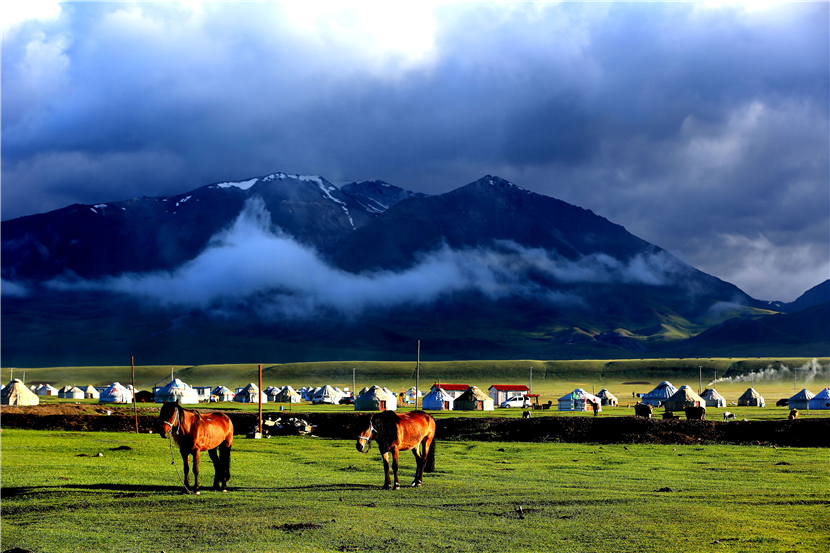
Location:
Bayinbulak Grassland is located in the intermountain basin in the northwest of Bayingoleng Mongol Autonomous Prefecture and Jingxian County, Xinjiang Uygur Autonomous Region, China, and in the middle of the Tianshan Mountains, surrounded by snow-capped mountains. From Hejing County, it can be reached directly along National Highway 217. Bayinbulak (known as Urudus or Zhuledus in ancient times) grassland means "inexhaustible sweet spring" in Mongolian (meaning "star plain" in Turkic).
The Bayinbulak Grassland located at the southern foot of the Tianshan Mountains is not very convenient, and the road conditions are mostly bumpy and rugged. Because of this, after crossing the snow-capped mountains and experiencing the fatigue of the journey, the vast green carpet that suddenly appears in front of you gives people a sense of enlightenment like suddenly encountering a peach blossom garden.
scales:
Bayinbruk Grassland is 363 kilometres from the city of Korla, consisting of two alpine inter-basins and hilly pastures in large and small Julian, the grassland is 270 kilometres long from east to west and 136 kilometres wide from north to south, with a total area of 23,835 square kilometres and a usable grassland area of 20,519 square kilometres, with an average elevation of 1,500 metres to 2,500 metres above sea level, making it the second-largest grassland in China, second only to Ordos in Inner Mongolia. Grassland.
The mountains around the Bayanbulak Grassland are all above 3000 meters above sea level. It is a typical alpine steppe pasture, alpine meadow pasture, alpine swamp pasture and mountain meadow pasture. The vast grassland is like a huge green carpet covering the entire land.
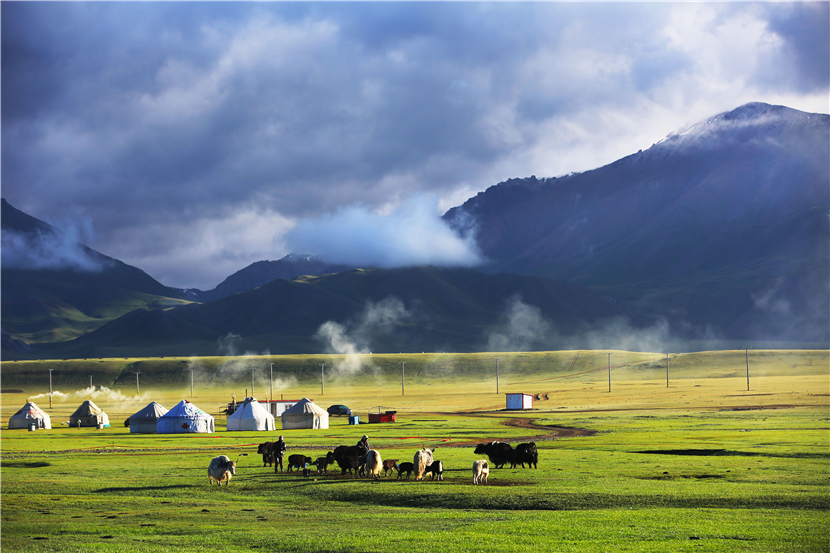
Natural ecosystems:
The Bayinbulak Grassland is less affected by human activities and preserves a variety of rare species in the world, making it an ideal breeding habitat for wild animals such as swans. Among them, there are 128 species in 23 families of birds; 24 species in 12 families of mammals; 4 species in 2 families of reptiles, 2 species in 2 families of amphibians, 5 species in 2 families of fishes and various invertebrates. The landscape is basically in the original state, monopolistic and irreplaceable.
The Bayinbulak grassland is covered with green grass, flocks of cattle and sheep, arched mountains, belts of rivers, undulating and vast terrain, a wide variety of plants, and excellent natural ecology. It has a vast territory, flat terrain, rich water and grass, and high-quality "Butter Grass" everywhere, feeding more than 600,000 (only) cattle and sheep. It is one of the animal husbandry bases in Xinjiang.
Yanqi Tianshan horses, Bayinbulak big-tailed sheep, Chinese merino sheep and yaks known as "Plateau Tanks" are abundant here, and they are known as "four treasures of the grassland". Every midsummer, the flowers on the grassland are in full bloom, competing for beauty, flocks of sheep wander like white clouds, and yurts like snow lotus are located among them.
On the Bayinbulak Grassland, there are also the swan reserve that inhabits the largest population of wild swans in China, the summer resort Gongnaisi Forest Park, and the Arsha Scenic Area with curative hot springs, etc.
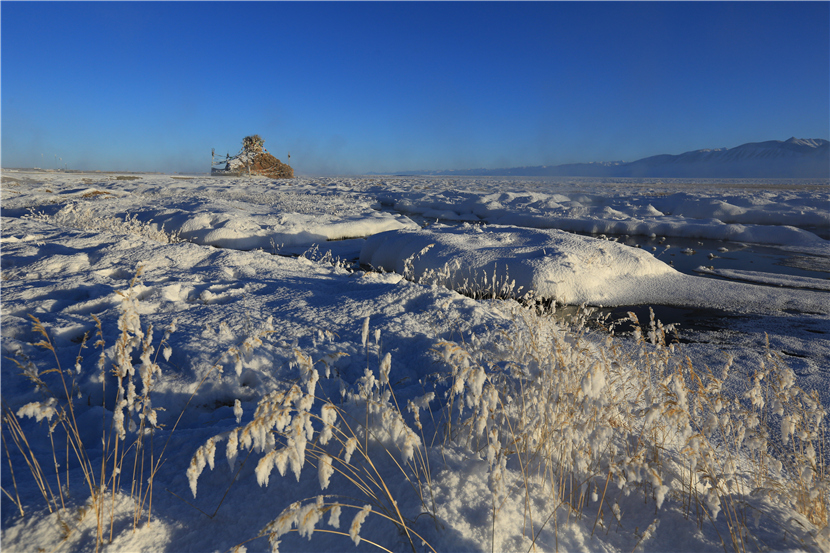
Scenic attractions:
Swan Lake Nature Reserve
The famous Swan Lake is located on the grassland, about 60 kilometers southwest of Bayin Township, Bayinbulak District Government, Hejing County, Xinjiang. Swan Lake is actually a large swamp composed of many small lakes connected in series, which is the first swan nature reserve in China. The protected area has lush water and grass, a humid climate and beautiful scenery. There are 128 species of birds, belonging to 14 orders, 30 families and more than 80 genera, including 53 species of passerines and 75 species of non-passerines; 95 species of breeding birds, accounting for 74%, of which 34 species are resident birds, inhabiting the largest wild swan in my country The population is a habitat for birds to breed and spend the summer. There are more than 20 species of mammals, including 2 species of amphibians and 5 species of fish. Among them, there are 8 species under national first-class protection, such as snow leopard, black stork, golden eagle, white-shouldered eagle, etc., and 25 species under second-class protection, such as swan, argali, snow chicken and so on.
Swan Lake Nature Reserve is a mountain and basin-type scenic tourist area integrating nature reserves and natural landscapes. In 1980, the Bayinbulak Swan Nature Reserve was established with the approval of the People's Government of Xinjiang Uygur Autonomous Region. In 1986, it was approved by the State Council as a national wild animal nature reserve.
In the early morning, when smoke rises from the yurts in the distance, some swans, big and small, start to rest, some start to forage, and some hardworking swans spread their wings out of the lake, flying over horseback, flocks and yurts , hovering in the distant valley. As the sun rises, the reflection of the snow-capped mountains gradually becomes clearer. Waterfowl such as wild ducks, larks, and larks set off a lively "bird chorus" on the lake, and the number of resting swans is increasing. The sleeping posture of swans is also extraordinary. They put their necks under their wings, or lie on the ground, or stand on one leg in the grass, or float on the water. Evening is the peak time for swans to forage. At this time, the swans danced an exquisite "water ballet" in the lake. Sometimes they stand upside down, and their bodies extend almost vertically into the water; sometimes they catch floating grass stalks and turn their necks back and forth; sometimes they squat in the grass, searching for delicate grass leaves. The swan's long neck gives it an elegant posture. When looking for food, its neck can be bent and twisted at will, drawing a series of smooth arcs.
In general, there are four main types of swans in China, three of which are: big, little and mute swans. Nearly 10,000 live in the Swan Lake Nature Reserve in Bayinbulak Grassland for as long as 8 months. It is the largest habitat and source of provenance for Chinese swans. It has five characteristics: wide variety, large quantity, concentrated habitat, rapid growth and development, and long residence period.
In addition, the number of geese and ducks is also very large, accounting for one-third of the country's geese and ducks. Among the 128 species of birds in the nature reserve, the white-tailed sea eagle and reed warbler are newly discovered birds in Xinjiang, and the dark-bellied snow pheasant is a newly discovered subspecies in China. There are 26 species of national protected birds.
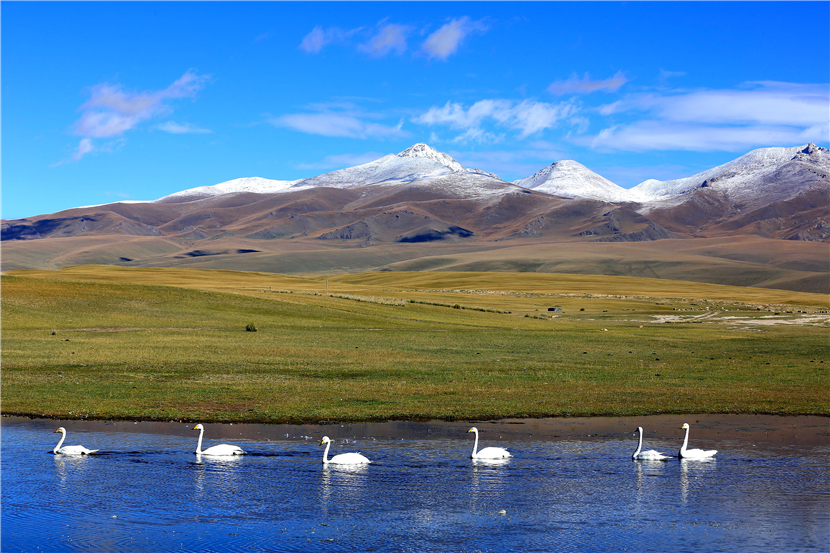
Tongtian River with nine bends and eighteen bends
There are 13 springs, 7 lakes, and 20 rivers in Bayinbulak Grassland. The Kaidu River meandering on the grassland is also known as "nine bends and eighteen bends". In "Journey to the West", one of China's four great classics,
Kaidu River also has a well-known name—Tongtian River. It is said that the "Shanjing Island" where Tang monks learned Buddhist scriptures is located in Hejing County, full of mystery. The nationally famous Bayinbulak Swan Lake Reserve is located in the upper reaches of the river. In the Alpine Basin, the tail of the river is Bosten Lake, the largest inland freshwater lake in China.
Kaidu River is one of the largest rivers in Xinjiang, and it is also a famous inland river. Its basin includes Hejing, Heshuo, Yanqi, Bohu and other counties. The Kaidu River has a total length of about 610 kilometers, a drainage area of 22,000 square kilometers, a total drop of 1,750 meters, and an average annual runoff of 3.362 billion cubic meters. Kaidu River is a river with small sediment, especially the upper valley is open and the slope is small. The natural and good grassland vegetation makes the upper reaches less sandy than the lower reaches, and it is an excellent irrigation and industrial water resource.
The Kaidu River with a width of more than 40 meters stretches and twists on the flat and vast grassland, just like the tears of the Bayinbulak grassland. It is pure and without any pretense, quietly nourishing the land.
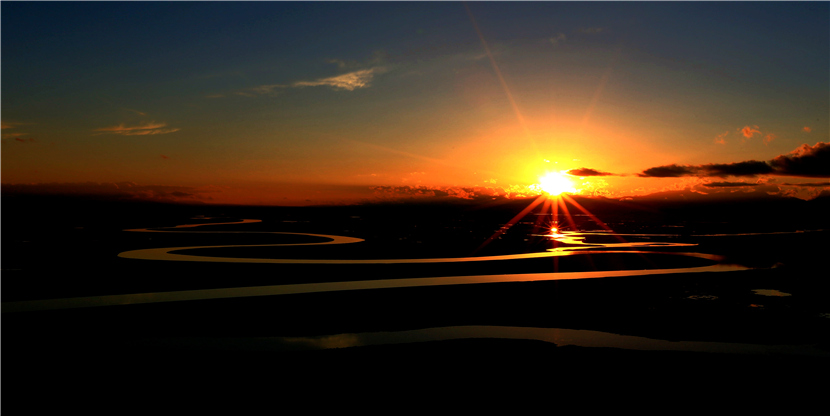
Quick Wusu Stone Forest
Because it is located in the western part of the Tianshan mountain range, the northern foot of the Narathi mountains under the Quik Wusu Darshan and named, stone forest area elevation of 3,500 metres, 9 kilometres long, 5 kilometres wide, the relative height of 30 m. The stone forest seems to be non-forest. Stone forest like forest is not a forest, it is by the semi-glue clean gravel rock layer by the external camping force of long-term sculpture, become a thousand shapes and forms, strange and strange, the stone forest in the "European fortress", solemn and solemn, there is "sword out of the sheath", piercing the blue sky, there are There are "pedestrians and beasts", either lying or lying down.
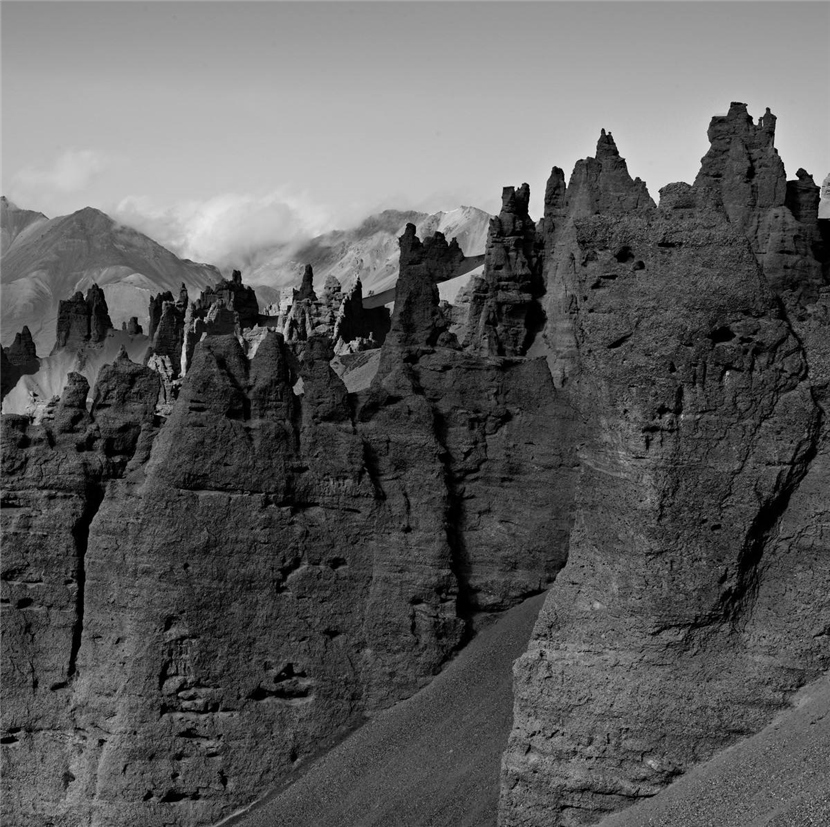
Horten Sara Waterfall
Starting from the Bayanbulak Grassland in Xinjiang, we rode through the Quakewusu Stone Forest, and after another 30 to 40 kilometers, we arrived at the Haotengsala Canyon with high mountains and deep valleys, shrouded in clouds and mist. In this canyon, which is less than 10 kilometers long and less than half a kilometer wide, the Haotengsala Plateau Waterfall, known as the "Snow Mountain Silver Training", falls from a cliff with a drop of about 30 meters and falls into a deep pool. Silver flowers splashed everywhere, water mist filled the air, and the sound was like thunder. Haoteng Sara Waterfall is 3200 meters above sea level, with a top width of 6-7 meters and a bottom width of 15 meters. The scenery around the waterfall changes with the seasons. In midwinter and early spring, the waterfall is surrounded by snow, silver and ice, which is a crystal world; beautiful, fresh and pleasant.
Travel guide:
time
The best time to travel is September.
[Note] The temperature on the grassland is low, so we should pay attention to cold protection. Even in July, August and September in summer, thick quilts must be covered when resting at night.
transportation
There is a shuttle bus between the seat of Bayinbulak District Government and Hejing County on the next day.
To go to Bayinbulak Grassland, you can take a car from Urumqi, turn to Duku Highway along Wuyi Highway, and drive more than 460 kilometers to Hejing County.
Or take a train from Turpan to Hejing County in Xinjiang, and then go west along the rugged mountain road for more than 300 kilometers from Hejing County to enter Bayinbulak Grassland.
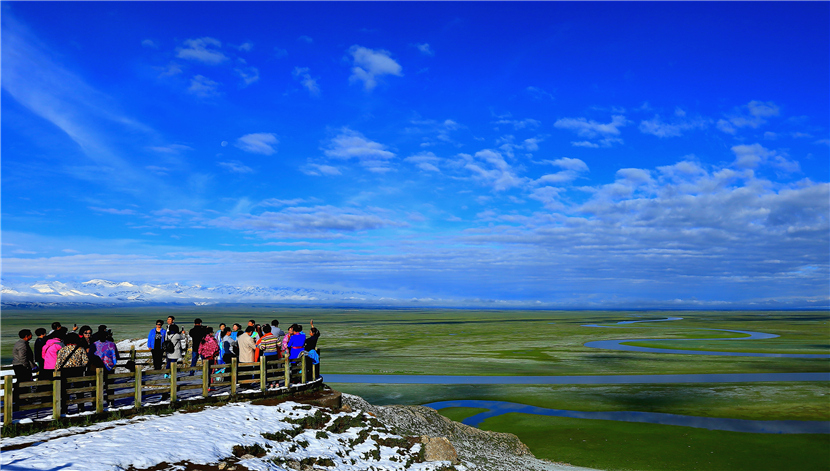
board and lodging
In terms of accommodation, there are guest houses and hotels in Bayinbulak, and tent hotels are built on the grassland for people to stay. There are also private hotels nearby for accommodation. In addition, Korla Bayin Hotel, located in the center of Bayinbulak Town, is also a popular choice for many tourists. It is only 3 kilometers away from Bayinbulak Grassland, and it takes 10 minutes by car to reach Bayinbulak Grassland. The hotel is equipped with a large halal restaurant that can accommodate 200 people and can provide local specialties.
In terms of food, grassland delicacies include roasted whole sheep with Xinjiang characteristics, milk tea, roasted lamb, and so on.
Notice
1. The temperature on the grassland is low, so we should pay attention to cold protection. Even in July, August, and September in summer, thick quilts must be covered when resting at night.
2. The area around Swan Lake is a grassland wetland swamp. Don't be greedy to see swans get too close and fall into the swamp. It is best to ask a local guide for guidance.
3. Pay special attention to the safety of using fire on grasslands.
4. Respect the ethnic and religious traditions and habits of the local people.
5. The road conditions along the Yining-Nalati line are not good, the vehicles are old, motion sickness or people who are prone to discomfort should have psychological preparations and preventive measures.
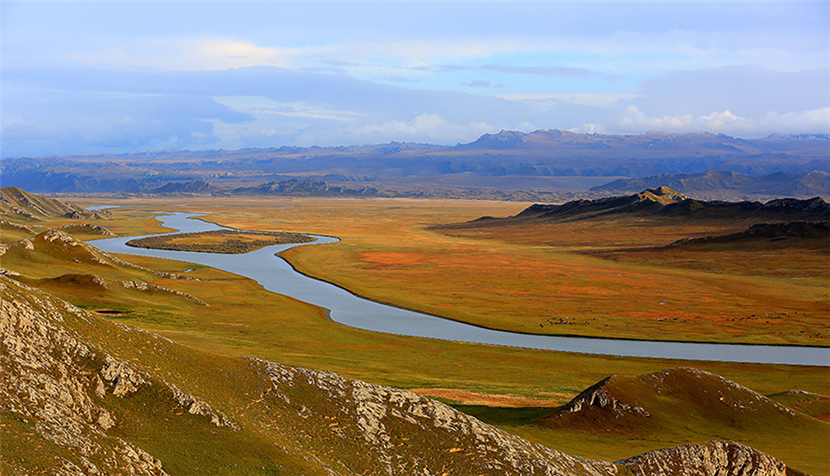



 Address: Hejing County, Bayingolin Mongolian Autonomous Prefecture, Xinjiang Uygur Autonomous Region Copyright: Bayinbuluke Scenic Area Management Committee, Hejing County
Address: Hejing County, Bayingolin Mongolian Autonomous Prefecture, Xinjiang Uygur Autonomous Region Copyright: Bayinbuluke Scenic Area Management Committee, Hejing County 

